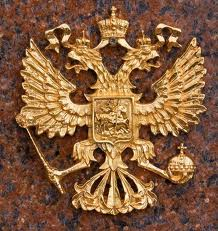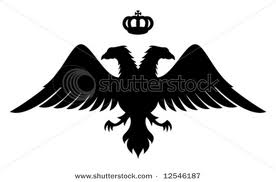|
|
 |
|
Byzantine Double Headed Eagle |
| The Byzantine Imperial flag is yellow with a black crowned double-headed eagle. The double-headed eagle was the symbol of the Palaiologos, the last Greek-speaking "Roman" dynasty to rule from Constantinople. Emperor Michael VIII Palaiologos recaptured Constantinople from the Crusaders in 1261, from a state based in Asia Minor; the double-headed eagle symbolized the dynasty's interests in both Asia and Europe, and was kept despite the fact that virtually all of the Asian possessions were gobbled up by the Ottomans within a generation of the recapture of the city.
The Symbol of the Ancient and Accepted Scottish Rite of Freemasonry of Canada is a double headed eagle, its wings displayed, ensigned of a Prussian crown, perched on a sword fessway Argent, hilt and pommel to the dexter. From the sword is draped a scroll bearing the motto “Deus Meumque Jus.” |
![]()
This
site gives you complete information on the Byzantine Empire.
| Ottoman & Byzantine Compare | Byzantine Vs Roman Catholics | Empire Rule |
| Ancient Byzantine Saints | Arab Wars | Architecture |
| Bureaucracy | Empire Art | Churches |
| Painters | Empire Walls | Vestments |
| Seminary | Diplomacy | Decoration |
| Crosses | Basilica and Cathedrals | Government |
| Necklace Jewelry | Notation | Swords |
| Emperor Leo iii | Emperor Heraclius Rule | Constantinople History |


